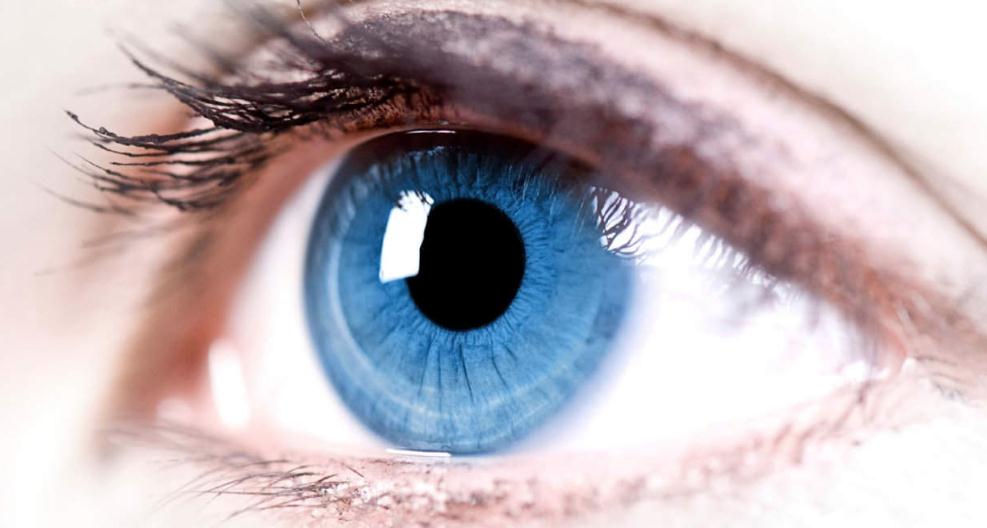Eye Surgery (Ophthalmology)
Eye surgery also known as ocular surgery, is surgery performed on the eye or its adnexa, typically by an ophthalmologist. The eye is a very fragile organ, and requires extreme care before, during, and after a surgical procedure to minimise or prevent further damage. An expert eye surgeon is responsible for selecting the appropriate surgical procedure for the patient, and for taking the necessary safety precautions. Mentions of eye surgery can be found in several ancient texts dating back as early as 1800 BC, with cataract treatment starting in the fifth century BC. Today it continues to be a widely practiced type of surgery, having developed various techniques for treating eye problems.

Common Eye Disorders
The following list provides a brief description of several common eye disorders. Talk with your healthcare provider or an ophthalmologist or optometrist for more information.
- Age-related macular degeneration. The age-related breaking down, or degeneration, of the macula area of the retina of the eye.
- Amblyopia. A reduction or dimming of vision in an eye that appears to be otherwise normal.
- Astigmatism. A condition in which an abnormal curvature of the cornea makes objects up close and at a distance appear blurry.
- Blepharitis. An inflammation of the edges of the eyelids involving hair follicles and glands, which help to wet the surface of the eye.
- Cataract. A condition in which the lens of the eye becomes dense or opaque and does not properly transmit light.
- Chalazion. A small bump that develops on the upper or lower eyelid. It is caused by inflamed meibomian glands that make the oil in tears.
- Conjunctivitis. Sometimes called pink eye, this is an inflammation of the blood vessels in the conjunctiva, the membrane that covers the sclera and inside of the eyelids. Conjunctivitis may be caused by bacteria or viruses, making it very contagious.
- Diabetic retinopathy. A disorder of the retina resulting from damage to the eye blood vessels and found in some people who have diabetes.
- Dry eye. This happens when there is not enough moisture in the eye, causing it to feel dry, hot, sandy, and gritty. Dry eye may be caused by low humidity, smoke, aging, certain diseases, and certain medicines (for example, antihistamines or decongestants).
- Floaters. These appear as spots, dots, or lines and affect or interrupt vision. Floaters are usually caused by bits of debris in the vitreous humor.
- Glaucoma. A disease that damages the optic nerve when fluid and pressure build up in the eye leading to irreversible vision loss.
- Hyperopia (also called farsightedness). This means a person has trouble seeing clearly up close.
- Iritis. An inflammation of the iris of the eye.
- Myopia (also called nearsightedness). This means a person has trouble seeing clearly at a distance.
- Presbyopia. Another type of farsightedness and is caused when the center of the eye lens hardens making it unable to accommodate near vision.
- Retina detachment. The separation of the retina from the back of the eye.
- Retinitis pigmentosa. The name given to a group of hereditary eye disorders, all of which involve the eye's retina, and retinal pigment epithelium, the light-sensitive nerve layer that lines the back of the eye, and all of which cause a gradual, yet progressive, loss or reduction in visual ability.
- Strabismus (also called crossed eyes). This describes a misalignment of the eyes.
- Stye. A noncontagious, bacterial infection of one of the sebaceous glands of the eyelid, typically tender to the touch. A stye looks like a small, red bump either on the eyelid or on the edge of the eyelid.
- Uveitis. A condition that happens in the uvea, or the middle layer of the eye. Because the uvea contains the blood vessels that supply nutrients to the eye, any form of uveitis may be serious and may be a symptom for other serious conditions.

Surgery Types:
-
Laser eye surgery
Although the terms laser eye surgery and refractive surgery are commonly used as if they were interchangeable, this is not the case. Lasers may be used to treat nonrefractive conditions (e.g. to seal a retinal tear). Laser eye surgery or laser corneal surgery is a medical procedure that uses a laser to reshape the surface of the eye. This is done to correct myopia (short-sightedness), hypermetropia (long sightedness) and astigmatism (uneven curvature of the eye's surface). It is important to note that refractive surgery is not compatible with everyone, and rarely people may find that eyewear is still needed after surgery
-
Cataract surgery
Cataract surgery, using a temporal approach phacoemulsification probe (in right hand) and "chopper" (in left hand) being done under operating microscope at a Navy medical center
A cataract is an opacification or cloudiness of the eye's crystalline lens due to aging, disease, or trauma that typically prevents light from forming a clear image on the retina. If visual loss is significant, surgical removal of the lens may be warranted, with lost optical power usually replaced with a plastic intraocular lens (IOL). Owing to the high prevalence of cataracts, cataract extraction is the most common eye surgery. Rest after surgery is recommended -
Glaucoma surgery
Glaucoma is a group of diseases affecting the optic nerve that results in vision loss and is frequently characterized by raised intraocular pressure (IOP). There are many types of glaucoma surgery, and variations or combinations of those types, that facilitate the escape of excess aqueous humor from the eye to lower intraocular pressure, and a few that lower IOP by decreasing the production of aqueous humor.
-
Refractive surgery
Refractive surgery aims to correct errors of refraction in the eye, reducing or eliminating the need for corrective lenses
-
Corneal surgery
Corneal surgery includes most refractive surgery as well as the following:
- Corneal transplant surgery, is used to remove a cloudy/diseased cornea and replace it with a clear donor cornea.
- Osteo-Odonto-Keratoprosthesis (OOKP), in which support for an artificial cornea is created from a tooth and its surrounding jawbone. This is a still-experimental procedure used for patients with severely damaged eyes, generally from burns
- Eye color change surgery through an iris implant, known as Brightocular, or stripping away the top layer of eye pigment, known as the Stroma procedure
-
Vitreo-retinal surgery
-
Vitrectomy
- Anterior vitrectomy is the removal of the front portion of vitreous tissue. It is used for preventing or treating vitreous loss during cataract or corneal surgery, or to remove misplaced vitreous in conditions such as aphakia pupillary block glaucoma.
- Pars plana vitrectomy (PPV), or trans pars plana vitrectomy (TPPV), is a procedure to remove vitreous opacities and membranes through a pars plana incision. It is frequently combined with other intraocular procedures for the treatment of giant retinal tears, tractional retinal detachments, and posterior vitreous detachments.
- Pan retinal photocoagulation (PRP) is a type of photocoagulation therapy used in the treatment of diabetic retinopathy
-
Retinal detachment repair
- Ignipuncture is an obsolete procedure that involves cauterization of the retina with a very hot pointed instrument.
- A scleral buckle is used in the repair of a retinal detachment to indent or "buckle" the sclera inward, usually by sewing a piece of preserved sclera or silicone rubber to its surface.
- Laser photocoagulation, or photocoagulation therapy, is the use of a laser to seal a retinal tear.
- Pneumatic retinopexy
- Retinal cryopexy, or retinal cryotherapy, is a procedure that uses intense cold to induce a chorioretinal scar and to destroy retinal or choroidal tissue.
- Macular hole repair
- Partial lamellar sclerouvectomy
- Partial lamellar sclerocyclochoroidectomy
- Partial lamellar sclerochoroidectomy
- Posterior sclerotomy is an opening made into the vitreous through the sclera, as for detached retina or the removal of a foreign body
- Radial optic neurotomy
- macular translocation surgery
-
Vitrectomy
-
Eye muscle surgery
With approximately 1.2 million procedures each year, extraocular muscle surgery is the third most common eye surgery in the United States
-
Oculoplastic surgery
Oculoplastic surgery, or oculoplastics, is the subspecialty of ophthalmology that deals with the reconstruction of the eye and associated structures. Oculoplastic surgeons perform procedures such as the repair of droopy eyelids (blepharoplasty), repair of tear duct obstructions, orbital fracture repairs, removal of tumors in and around the eyes, and facial rejuvenation procedures including laser skin resurfacing, eye lifts, brow lifts, and even facelifts. Common procedures are:
-
Eyelid surgery
- Blepharoplasty (Eyelift)
- Ptosis repair for droopy eyelid
- Entropion repair
- Canthal resection
- Epicanthoplasty
- Tarsorrhaphy is a procedure in which the eyelids are partially sewn together to narrow the opening.
-
Orbital surgery
• Orbital reconstruction / Ocular prosthetics (False Eyes)
• Orbital decompression for Grave's Disease. Grave's Disease is a condition (often associated with over-active thyroid problems) in which the eye muscles swell. Because the eye socket is bone, there is nowhere for the swelling to be accommodated and as a result the eye is pushed forward into a protruded position. In some patients this is very pronounced. Orbitial decompression involves removing some bone from the eye socket to open up one or more sinuses and so make space for the swollen tissue and allowing the eye to move back into normal position.
-
Surgery involving the lacrimal apparatus
A dacryocystorhinostomy (DCR) or dacryocystorhinotomy is a procedure to restore the flow of tears into the nose from the lacrimal sac when the nasolacrimal duct does not function.
